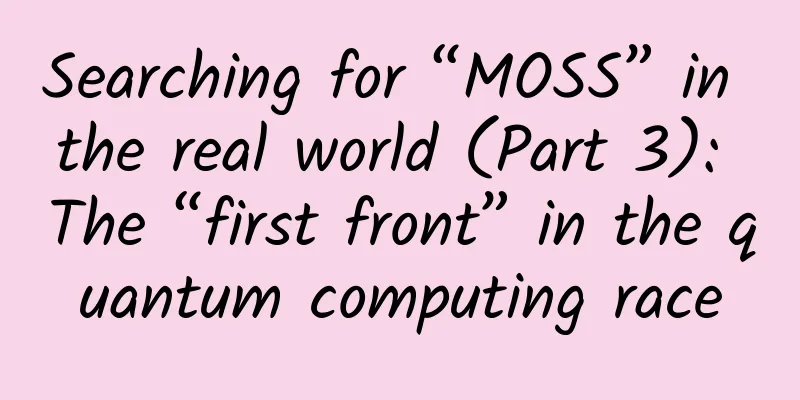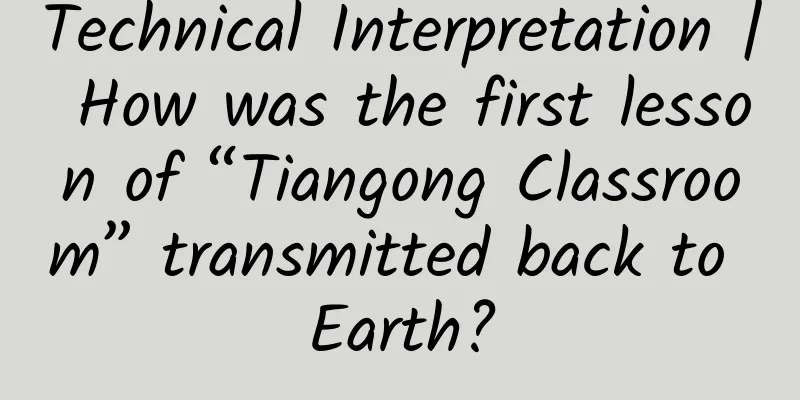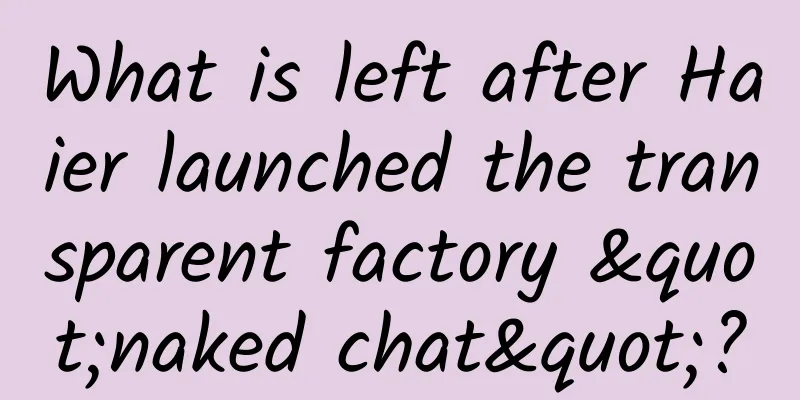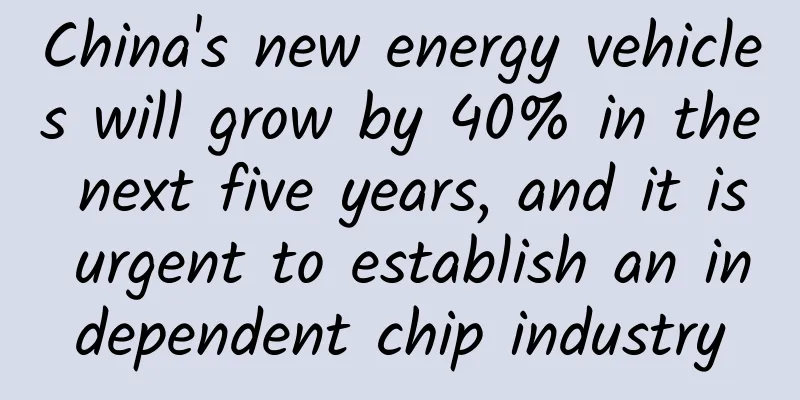Searching for “MOSS” in the real world (Part 3): The “first front” in the quantum computing race

|
Produced by: Science Popularization China Author: Luan Chunyang (Department of Physics, Tsinghua University) Producer: China Science Expo In the science fiction film The Wandering Earth 2, which was released in early 2023, "MOSS" is portrayed as the most powerful quantum computer with extremely high intelligence and super computing power, providing strong support for humans in the face of various crises in the universe. The inspiration for this amazing computing power comes from the progress of quantum computer technology in the real world. Such a wonderful imagination not only adds a science fiction element to the film, but also makes people full of infinite reverie about the development of future technology. "MOSS" in "The Wandering Earth 2" (Photo source: Stills from the movie "The Wandering Earth 2") However, in the real world, the basic computing unit of quantum computers, qubits, are easily disturbed by environmental noise, which greatly limits the development and practical application of quantum computers. Therefore, how to find a suitable physical carrier to construct a stable qubit has become a topic that scientists have been studying. What exactly is the legendary quantum bit? Most of the electronic devices we come into contact with in our daily lives are traditional classical computers. The basic computing unit of a classical computer is a bit, which can only deterministically represent a 0 state or a 1 state, thereby completing binary operations on data. Quantum computers use a completely new computing method. Their basic computing unit is the quantum bit (qubit), which can simultaneously represent the superposition of the 0 state and the 1 state. In other words, a quantum bit can represent the 0 state with a certain probability, and at the same time represent the 1 state with a certain probability. It is precisely because of this wonderful characteristic of the quantum bit that quantum computers can perform parallel operations in the 0/1 superposition state on certain specific problems, thereby obtaining exponentially superior computing power that far exceeds that of classical computers. As the basic computing unit of a quantum computer, a quantum bit needs to have two distinguishable energy states (energy levels) inside it, which can be encoded into state 0 and state 1 respectively, and can achieve probabilistic transitions between state 0 and state 1 under external drive. However, as mentioned above, quantum bits are very susceptible to environmental noise. How quantum computers work (Photo source: Volkswagen AG) Fortunately, some natural particles in nature have very stable physical properties and are therefore not easily disturbed by external noise. At the same time, they usually have two stable energy states (energy levels) inside, which inspires scientists to artificially manipulate some natural particles to construct quantum bits that can stably encode 0/1 superposition states. These natural particles usually include: charged ions, uncharged atoms and single photons. Their common feature is that they meet the above requirements for quantum bits. Depending on the selected particles, quantum computers can be divided into three types, namely ion trap quantum computing (charged ions), cold atom quantum computing (uncharged atoms) and optical quantum computing (single photons). This scheme of using natural particles to construct quantum bits is also called a "natural two-level system". It is simple, stable and easy to manipulate, so it is also the earliest physical system to be widely studied. Today, the natural two-level system has developed into the "first front" in the quantum computing track. Next, we will briefly introduce the different members of this team. Ion trap quantum computing - "locking up" charged ions! Among the many particle candidates in nature, the first particle that scientists think of is the charged ion, which is based on two considerations: First, there are clearly distinguishable energy levels inside the ions, and the energy level structure is relatively simple, so it is relatively easy to construct quantum bits to encode the superposition state of 0/1; secondly, the ions themselves carry electric charges, so a single ion can be stably trapped under the action of the external electric and magnetic fields, thereby constraining the movement of the charged ions to a very small spatial range, thus forming an ion trap. It is precisely because charged ions have the above-mentioned two advantages that as early as 1995, scientists proposed using charged ions to construct quantum bits to realize a real quantum computer. Physicists in Innsbruck expose four entangled ions to a noisy environment (Image source: phys.org) However, it is not easy to manipulate single charged ions artificially, which mainly faces two technical problems: First, there are a large number of particles with different charges in the atmosphere. Charged ions exposed to the atmosphere can easily react with particles with opposite charges. So how can we stably capture a single charged ion and keep it stably imprisoned for a long time? The second is how to finely manipulate the internal energy levels of single ions with an average size of less than 0.02 microns and a mass of only about 2~3×10-22 grams, so as to construct ion quantum bits that can encode 0/1 superposition states. For the first problem, the charged ions need to be isolated in a chamber with an ultra-high vacuum to protect the ions from being electrically neutralized. Generally speaking, the ultra-high vacuum inside the chamber can reach 10 to the negative 9th power -9Pa, which is roughly equivalent to the vacuum on the surface of the moon. In order to further confine the charged ions in a small enough space, the combined action of "electric field-magnetic field" is also needed to complete the capture of the ions. In addition, laser cooling is also used in the experiment to reduce the movement speed of the ions, so as to obtain nearly stationary charged ions in the ultra-high vacuum chamber. Ion trap system that can achieve ultra-high vacuum of 10 to the negative 9th power Pa (Image source: provided by the author) For the second question, in order to artificially manipulate a single trapped ion, scientists usually focus the diameter of the laser spot to about a few microns to drive the transition between the internal energy levels of the charged ion. In addition, similar operations can be achieved experimentally using microwaves and other methods. In 1989, physicists Paul and Dehmelt jointly won the Nobel Prize in Physics for "developing ion trapping technology." Three 1989 Nobel Prize winners in Physics (Image source: sciencedirect) So far, quantum computing based on trapped ions has developed rapidly, with an accuracy of more than 99.9%. In addition, more and more ion trap startups have invested in research on expanding the number of trapped ions, and have achieved stable trapping of hundreds of ions and demonstrations of related quantum computing. Of course, with the increasing number of ions and the need for more sophisticated control, ion trap quantum computing still faces challenges in structural design and processing technology, which is also one of the key areas of research for scientists in the future. Cold Atom Quantum Computing - Atoms: Cold! Caught by "Optical Tweezers" Although ion trap quantum computing has the characteristics of simple and stable energy level structure, the insufficient scalability of the number of ions itself has always been the main limiting factor restricting its further development. Therefore, scientists began to turn their attention to another natural particle, hoping to construct a physical system with thousands of particles and continuous expansion, and this natural particle is the atom we learned in middle school. I believe that everyone has seen the model of atomic structure to some extent. It may be located in the flowerbed next to the entrance of a middle school, or it may appear in the corner of a science museum. This classic atomic structure model usually consists of two parts, one is the positively charged nucleus located in the center, and the other is a number of negatively charged electrons orbiting outside the nucleus. Therefore, the positive and negative charges of the atom itself are balanced, and the atom as a whole does not show the characteristics of being charged. (Photo source: Veer Gallery) Precisely because atoms themselves are not charged, scientists cannot use an "electric field-magnetic field" method similar to trapped ions to capture atoms. This requires the development of another technology to stably capture atoms and thus construct corresponding quantum bits. Fortunately, scientists have discovered that if a beam of laser is focused on the surface of an atom, the atom will feel a force pointing to the point of maximum light intensity in three directions. In this way, the atom will be squeezed by forces in three directions at the same time to the vicinity of the strongest point of the laser. This "trap-like" mechanism can confine atoms in a specific space and can move with the movement of the converging light beam. The converging light beam confines the atoms like tweezers, so this mechanism is also called "optical tweezers." Conceptual image of a two-qubit gate. In this system, two atoms (1 μm apart) trapped by optical tweezers (pink light) are manipulated by an ultrafast laser pulse (blue light) lasting only 10 ps. (Photo credit: Takafumi Tomita/IMS) Generally speaking, the atoms captured in optical tweezers are in an almost stationary state, and the corresponding stable temperature is only about a few millikelvin (mK). Therefore, the central atom bound by optical tweezers technology is also called a "cold atom." Optical tweezers (Image source: Wikipedia) It is worth mentioning that scientists can not only use optical tweezers technology to precisely manipulate the quantum state of neutral atoms, but can also further realize the interaction between different atoms, thereby constructing a series of high-precision quantum gate operations. Thanks to the flexibility of optical tweezers technology, cold atom quantum computing solutions based on neutral atoms have very unique advantages: high scalability and flexible operability. It is also thanks to the invention of optical tweezers technology that Arthur Ashkin and others won the 2018 Nobel Prize in Physics. 2018 Nobel Prize in Physics Winners (Image source: 2018 Nobel Prize in Physics official website) So far, optical tweezers technology has been developed to achieve any optical array shape, so as to stably bind different neutral atoms in any area, and can achieve stable confinement of more than 1,000 neutral atoms. In addition, scientists are also actively trying to expand the original simple two-dimensional plane to a three-dimensional spatial structure, so as to further improve the scalability of the system. However, the optical tweezers technique also has certain limitations. This is because although the binding force generated by the optical tweezers can stably trap neutral atoms, this force is still very weak. At the end of the cold atom quantum computing operation, additional lasers are needed to detect the quantum state of the neutral atoms, which will cause the neutral atoms originally in the optical tweezers to be lost. This means that after each operation, cold atom quantum computing needs to use optical tweezers to capture new neutral atoms, which increases the technical difficulty and reduces the operation speed. Of course, scientists are also actively exploring more effective ways to achieve stable binding of neutral atoms. It is believed that in the near future, quantum computing solutions based on neutral atoms will shine in practical applications. Optical quantum computing: photons also join in the fun The last natural particle to appear is the photon, which is a physics concept that is both familiar and unfamiliar to everyone. Photons are the basic particles that make up light. They move in the form of beams and can penetrate some media, such as air, water, and glass. In addition, photons themselves do not carry any charge, so it is difficult for them to interact with the outside world. In other words, photons are not material particles in our traditional impression, but a kind of fundamental particle that has both particle and wave properties. Photon (Image source: Astronomy) When a photon propagates in space, it moves forward at the speed of light with a certain inherent vibration frequency. If the vibration trajectory of the photon is plotted on a two-dimensional plane, it will be like the sine function we learned in middle school mathematics. This two-dimensional plane represents a certain polarization state of the photon. However, considering that the direction of the photon's vibration in three-dimensional space can be constantly changing, this means that the photon can have different polarization states. If we stand in front of the photon's movement and observe, we will find that the trajectory of the photon's vibration may be a horizontal straight line (horizontal polarization), or a vertical straight line (vertical polarization), or a nearly perfect circle (circular polarization), and so on. Polarization state diagram (Image source: Wikipedia) In the optical quantum computing scheme, scientists use the wonderful property of the "polarization state" of photons to construct optical quantum bits. Specifically, the horizontal polarization state can be encoded as 0, and the vertical polarization state can be encoded as 1, thereby completing the construction of a single optical quantum bit. In order to precisely manipulate and measure the polarization state of photons, optical devices such as polarization beam splitters and wave plates can be used experimentally to perform computational operations on optical quantum bits. USTC successfully developed the "Jiuzhang-2" quantum computing prototype with 113 photons (Image source: ustc.edu.cn) The optical quantum computing solution has three obvious advantages: First, photons themselves basically do not interact with the external environment, so they have natural isolation characteristics and can remain undisturbed in high-noise environments; second, photons can propagate at the speed of light and can work at room temperature and atmospheric conditions, with good experimental operability; third, the propagation of photons can be further integrated with optical devices such as optical fibers, thereby achieving system miniaturization and constructing a miniaturized optical quantum system at room temperature. However, due to the particularity of photons themselves, optical quantum computing systems cannot effectively store photons with extremely fast transmission speeds, and weak photons are also very easy to be lost during optical fiber transmission. In addition, since there is no interaction between photons, it is also difficult to realize the interaction between different photons and the corresponding quantum gate operations in experiments. Conclusion In summary, natural two-level systems can be used to construct quantum bits because of their natural reliability and stability, thereby representing the entangled state of 0/1. By controlling and reading these two-level systems, the interaction between different quantum bits can be realized, thereby realizing the algorithms and operations in quantum computing. Of course, building a large-scale quantum computer is still an extremely challenging task, but the use of natural two-level systems is advancing the development of this field step by step. In fact, many scientists believe that natural two-level systems are one of the most promising ways to build large-scale quantum computers. Therefore, natural two-level systems are widely used in quantum computing and have also become the "first front" in the quantum computing track. So, what kind of wonderful performance will other players in the quantum computing race bring? Please allow me to keep it a secret here, and let us find out in the next chapter! Editor: Sun Chenyu |
>>: Several common sleep myths: How late is considered staying up late? How to improve sleep?
Recommend
iOS 15.5 serious bug has been fixed, iOS 16 will be released the day after tomorrow
It is June, and the Apple WWDC2022 conference is ...
Mother’s Day Marketing Promotion Case Analysis!
A Boston company called Rehtom once posted a very...
How can a promotion account achieve the best delivery effect? Here are 8 tips
Have you ever encountered this situation? You too...
Teladian, which charges 2.98 yuan per kilowatt-hour, has kicked off a general increase in charging fees. Don’t let saving money on electric vehicles become a joke
"Why do you buy a tram?" Faced with thi...
What was the universe like before the Big Bang?
New research suggests that a new model of the uni...
Can you become a brand by selling goods online?
Topic: "Can online sales become a brand?&quo...
Two major routines: How did the "TikTok" divine song become a brainwashing feast for the whole nation?
Let’s learn to meow together, meow meow meow meow...
Offline payment war among giants: WeChat's offensive is fierce, while Alipay survives in adversity
Under the fierce attack of WeChat for two consecu...
Why are there so many different flight configurations for helicopters? What are their characteristics?
Compared with fixed-wing aircraft, helicopters ca...
What is Xiaomi’s plan to implant the “Mary Sue” gene into the feverish spirit?
At the Xiaomi 5X launch conference, Lei Jun made a...
Three common breakfast combinations are actually very unhealthy. Are you one of them?
Recently, the topic #Skipping breakfast makes you...
More "terrible" than sugar and salt! Three highs, diabetes all come to you! You may eat it every day
This article was reviewed by Pa Li Ze, chief phys...
For King of Glory, let’s talk about personalized precision marketing based on big data
Today I will talk about attracting new users, pre...
Is MR the next stop for VR?
By putting on a pair of glasses, you can interact...
WeChat: After May 20, it will no longer provide the mini program to open the App service, which has received a lot of complaints from users
Recently, WeChat Open Community issued a notice a...









